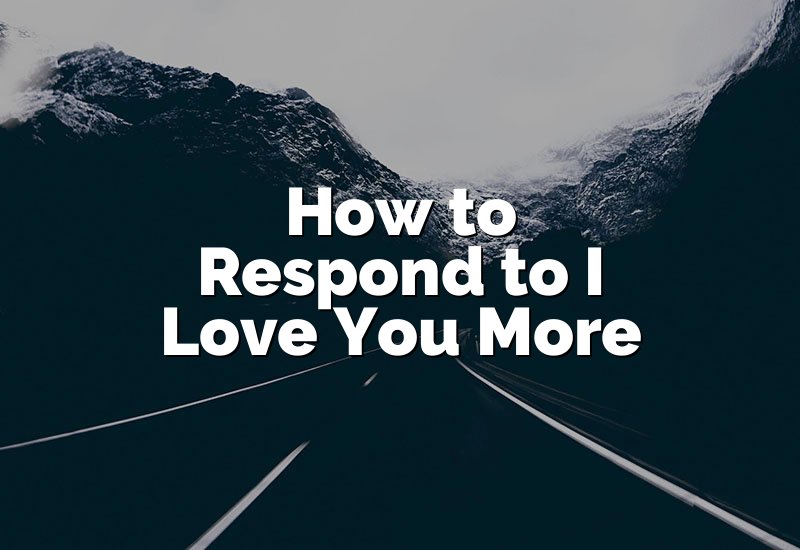Sometimes we want to help someone but do not know the right way to ask. Asking if someone needs anything can show care, love, and support. You can ask friends, family, coworkers, or even strangers in many different ways. In this article we will share 12 easy ways to ask if someone needs anything and give simple examples like offering help at home, at work, or for small favors.
1. Simple and Direct Ask
Sometimes the easiest way is the best way. You can ask someone directly if they need help. Being clear and polite makes people feel comfortable to accept or decline your offer. You do not need to make it complicated. Just a simple question can show you care. People appreciate honesty and straightforwardness because it saves time and avoids confusion.
You can say:
- Do you need any help with that task
- Can I help you with something right now
- Is there anything I can do for you today
When you ask directly, make sure your tone is kind and friendly. Smile and make eye contact if you are talking in person. If you are asking online or through text, make it warm with words like please or just checking. Direct questions are clear and easy to answer, and the person feels your support immediately.
2. Offering Specific Help
Sometimes general offers may confuse people. They might say no even if they need help. A better way is to offer specific help. When you mention exactly what you can do, it makes the choice easier. People can say yes or no based on your suggestion, and you look thoughtful and considerate.
You can try:
- Do you want me to cook dinner for you tonight
- Can I pick up groceries for you on my way
- Would you like me to help clean your room
Specific offers also show that you are paying attention to their needs. It makes the person feel special because you are not asking in general but thinking about their real life. This method works great for friends, family, and even coworkers who might be busy. People are more likely to accept help if you are clear about what you can do.
3. Offering Help Indirectly
Some people do not like to be asked directly. They may feel shy or uncomfortable. In this case, you can offer help indirectly. This means you give a chance for them to ask without pressure. Indirect ways are softer and feel more casual.
Examples:
- I am going to the store, do you need anything
- I am free this afternoon, we could do some work together
- I am making coffee, do you want me to bring one for you
Indirect offers give space for the person to say yes or no. It is helpful when someone is nervous about asking for help. You are still showing care, but in a lighter and friendly way. People feel your kindness without feeling forced.
4. Asking With Empathy
Empathy means understanding how the other person feels. Asking with empathy shows that you care about their feelings and not just helping for the sake of helping. When you ask with empathy, you make them feel seen and supported. You listen first, then offer help in a gentle way.
Examples:
- You seem tired today, do you need me to help
- I know you are busy, can I take something off your plate
- You look stressed, is there anything I can do
Using empathy makes your offer meaningful. People notice when you care about their emotions and not just tasks. It builds trust and strengthens relationships. Asking with empathy is powerful because it shows you are paying attention and willing to support them emotionally and practically.
5. Offering Help Through Actions
Sometimes words are not enough. You can show help through actions. Doing small things before asking can show your support and make them feel cared for. Actions often speak louder than words, and people feel your kindness immediately.
Examples:
- Bring them a snack without asking first
- Help carry something heavy for them
- Open the door or guide them somewhere they need to go
When you act first, it creates a friendly and helpful environment. People will notice and might feel more comfortable asking for help next time. This method is great for family, friends, and even strangers. Actions combined with words can make your support more visible and appreciated.
6. Using Humor
Humor can make asking for needs less serious and more fun. People feel relaxed when you make them smile while offering help. It breaks tension and creates a positive atmosphere. Humor also shows that you care but in a light way that is not overwhelming.
Examples:
- Looks like you are juggling too many things, need a hand
- Do you want me to be your superhero for a moment
- Can I rescue you from that boring task
Using humor works well with friends, coworkers, and family who enjoy light conversation. Make sure your humor is kind and not making fun of them. Gentle jokes or playful words make people comfortable to accept help and enjoy the interaction.
7. Offering Help in Writing
Sometimes people find it easier to ask for help through messages or notes. Writing allows them to think and reply when they are ready. This method works well for shy or busy people. You can show care and make your offer easy to accept.
Examples:
- I can help you with your homework if you want
- Do you need me to pick up anything from the store
- Let me know if you need a hand with your project
Writing shows thoughtfulness and patience. It gives the person time to consider your offer without feeling pressured. Messages, notes, or even emails can be a nice way to ask if someone needs help. This is perfect for long-distance friends or coworkers who might not be near you physically.
8. Asking in Group Settings
When you are with a group, you can ask if anyone needs help. This method works in families, workplaces, or social events. It makes people feel included and supported. Group settings allow multiple people to accept help without embarrassment.
Examples:
- Does anyone need help with setting up the party
- Can I help someone carry things for the team
- Do you all need anything before we start
Asking in a group is polite and efficient. You can help multiple people and create a friendly atmosphere. It also shows leadership and thoughtfulness. People feel supported and notice that you care about the group, not just one person.
9. Checking Back Later
Sometimes people say no at first even if they need help. Checking back later shows you care and remember them. This method is gentle and non-intrusive. You can offer help again after some time, and they might accept it when ready.
Examples:
- I know you said you are fine, but do you need help now
- Can I help you with that task later today
- Do you want me to bring anything for you this afternoon
Checking back is patient and kind. It shows that you do not forget their needs and are willing to be there for them. People often appreciate repeated offers because it feels like true support and care, not just a one-time question.
10. Offering Help Before They Ask
Sometimes you notice someone struggling before they ask. Offering help before being asked shows attentiveness. People feel supported and relieved when someone notices their needs in advance. This is especially helpful in busy or stressful situations.
Examples:
- I saw you are carrying a lot, want me to help
- You look tired, can I take something for you
- I know you are busy, should I handle this task
Being proactive shows care and responsibility. People feel loved and understood when you offer help before they need it. It also makes tasks easier for them and creates a caring environment. Proactive help builds strong friendships and family connections.
11. Offering Help Through Encouragement
Sometimes people hesitate to ask because they feel bad. Encouraging them can make them open up. Words of encouragement can make someone feel comfortable asking for help and accepting it. Encouragement creates trust and emotional support.
Examples:
- You are doing great, do you need a hand
- It is okay to ask for help, can I assist you
- You do not have to do everything alone, want me to help
Encouragement is gentle and motivating. People often accept help when they feel supported and understood. Words combined with small actions can boost their confidence and lighten their load. Encouragement shows emotional intelligence and care for others.
12. Offering Help with Options
Giving options allows the person to choose what they need. Options make it easier for them to accept help without feeling pressured. People feel more comfortable when they have choices. This method is flexible and friendly.
Examples:
- Do you want me to cook, clean, or run errands for you
- Can I help with homework, shopping, or organizing
- Would you like me to carry, cook, or just sit with you
Offering options shows thoughtfulness and respect for their preferences. People feel in control and supported at the same time. This method works in families, friends, and workplace settings. Options make your offer practical and easier to accept.
Final Thoughts
Helping someone is a simple way to show love and care. Asking if someone needs anything does not have to be complicated. You can use direct questions, specific offers, empathy, humor, or actions to make it easy. Small gestures create big impacts and strengthen relationships. Remember to be kind, patient, and thoughtful in every offer you make.
| Method | Description | Examples |
|---|---|---|
| Simple and Direct Ask | Ask clearly and politely | Do you need any help, Can I help you, Is there anything I can do |
| Offering Specific Help | Suggest exact ways to help | Cook dinner, Pick up groceries, Help clean |
| Offering Help Indirectly | Ask softly without pressure | Going to store, Free afternoon, Making coffee |
| Asking With Empathy | Show care for feelings | You seem tired, Busy day, Stressed out |
| Offering Help Through Actions | Help first with small actions | Bring snack, Carry things, Open door |
| Using Humor | Light and playful offers | Juggling tasks, Superhero moment, Rescue from work |
| Offering Help in Writing | Send messages or notes | Homework help, Store pickup, Project support |
| Asking in Group Settings | Help multiple people | Party setup, Carry items, Pre-start check |
| Checking Back Later | Offer help again politely | Help now, Later today, Bring something |
| Offering Help Before They Ask | Notice and help first | Carrying a lot, Tired, Busy tasks |
| Offering Help Through Encouragement | Encourage and support | Doing great, Okay to ask, Not alone |
| Offering Help with Options | Give choices to make it easier | Cook, Clean, Run errands |
Frequently Asked Questions (FAQs)
Is it rude to ask someone if they need anything
No, it is not rude to ask. When you ask kindly, it shows care and consideration. Most people feel happy when someone offers help because it shows support. Just make sure to ask in a polite and friendly way. Tone matters more than words. A gentle question is always better received than a rushed or demanding one.
Can I offer help even if they say no
Yes, you can offer help even if they say no at first. Sometimes people are shy or feel embarrassed. Checking back later or offering help in another way can show patience and care. Your continued support shows that you are reliable and truly want to help without forcing anything.
Do I need to be direct every time I offer help
No, you do not need to be direct all the time. Some situations need indirect offers or actions. You can also use humor, encouragement, or options. It depends on the person and the situation. Being flexible makes your help more effective and appreciated.
Is it better to offer specific help than general help
Yes, specific help is often better. People may not know what they need exactly, so giving options or clear suggestions makes it easier for them to accept. Specific offers show thoughtfulness and make the help practical and real.
Can offering help improve relationships
Yes, offering help can improve relationships. It builds trust, care, and respect. People remember when someone is kind and supportive. Regular acts of help make friendships, family ties, and work relationships stronger and more positive.
Do I need to offer help to everyone
No, you do not need to offer help to everyone. Focus on people you know or those who might genuinely need it. Be considerate but do not feel obligated to help everyone. Your effort should come from genuine care, not pressure.
Is it okay to offer help through actions instead of words
Yes, actions can be very effective. Sometimes people do not feel comfortable asking for help, so small acts like carrying, bringing snacks, or assisting quietly can show support. Actions combined with kind words are even better.
Can humor make asking for help more effective
Yes, humor can make asking for help easier. It relaxes people and creates a positive atmosphere. Gentle jokes or playful offers reduce stress and make people more open to accept help. Make sure your humor is kind and friendly.









